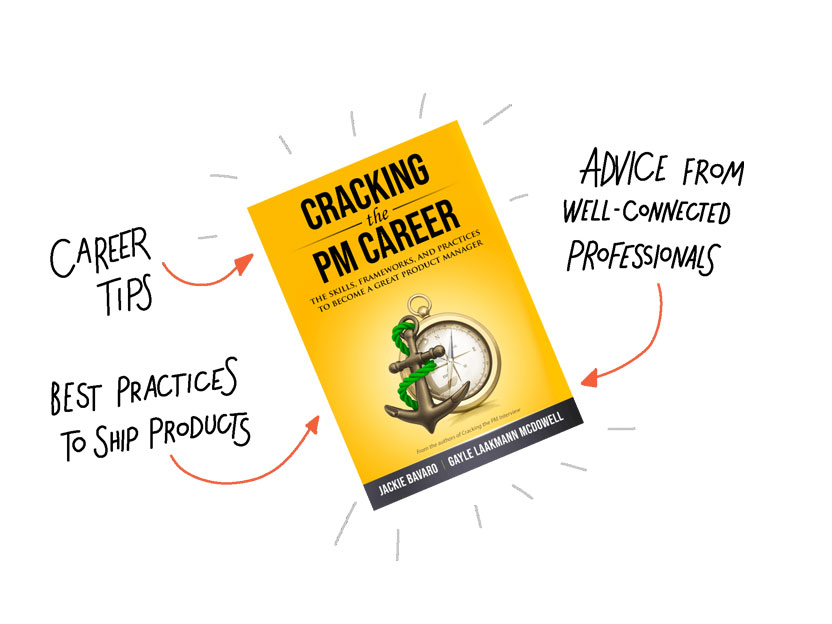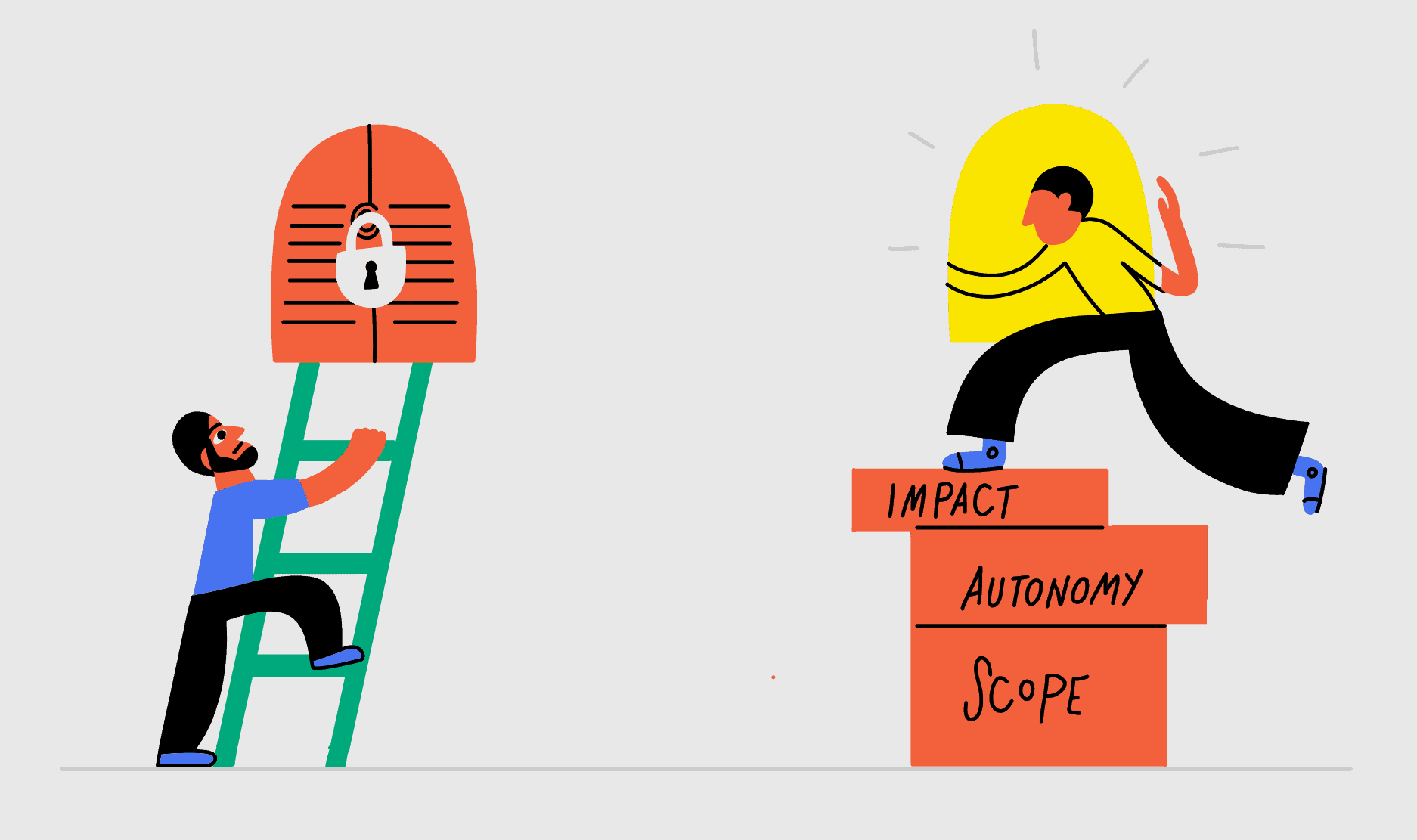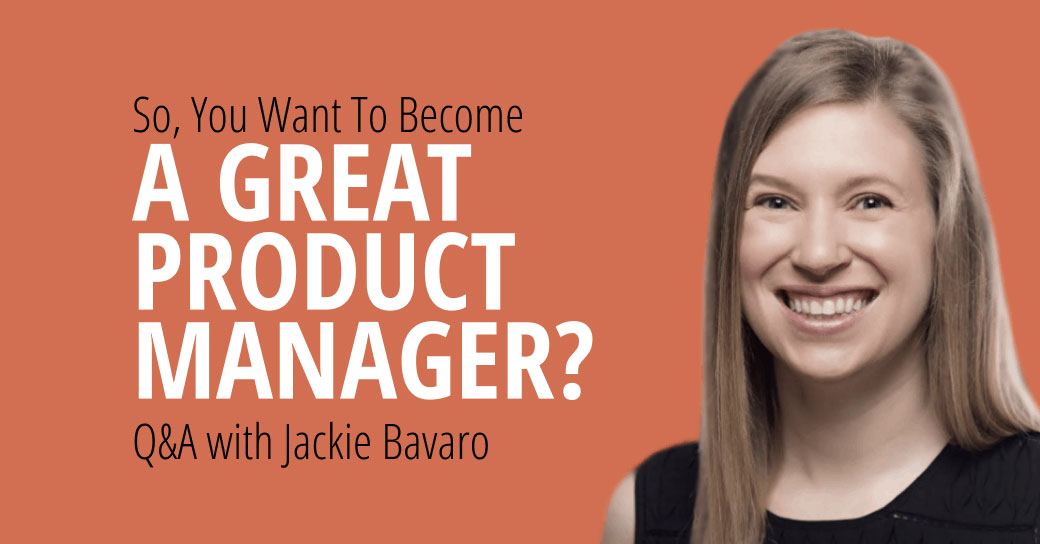Nir’s Note: Recently, I had the pleasure of chatting with Jackie Bavaro about her latest book, Cracking the PM Career—a complete guide to the skills, frameworks, and practices you need to become a great product manager. Jackie serves as the Head of Product Management at Asana and has held senior product manager jobs at Microsoft and Google, where she launched Google Place Search and Geo-IP Based Local Search. Based on her experiences hiring other product managers, she wrote her first best-selling book, Cracking the PM Interview, with co-author Gayle McDowell.
Nir Eyal: Why did you write this book?
Jackie Bavaro: I want there to be more great products in the world.
So many people are pouring their energy into building, launching and supporting products that through no fault of their own, will fail. Sometimes the failed products just don’t sell well, but sometimes they actively do harm, such as when a vaccination appointment website is too complicated for seniors to use.
Imagine how much better the world could be if we could catch those wasted efforts sooner and steer those products in a better direction.
I believe that for there to be more great products in the world, we need more people who think like great product managers. These don’t need to be people with the official title of “product manager”; they can be engineers, designers, marketers, founders, or any other role at the company.

Unfortunately, not everyone with the potential to be a great product manager gets the opportunity and development they need. In Cracking the PM Interview, I tackled the opportunity piece by publicly sharing the interviewing approaches and advice that well-connected candidates already knew. With this new book, I’m tackling the development piece. It shares both the best practices that help people reliably ship successful products, and the career advice that helps people expand their impact over time.
NE: You’ve done some fascinating research. From what you’ve learned, what surprised you the most?
JB: The most surprising thing I’ve learned is how many people get told they need to “be more strategic” and have no idea what that means. It’s incredibly common feedback, but people don’t get actionable advice on how to address it.
What I found is that there are three distinct phases in a product management career: shipping products, product strategy, and organizational excellence.
When you want to break into Senior PM roles, being a great PM is no longer just shipping products that delight customers and hit the goals. You enter the phase of your career where being a great PM means identifying new opportunities and coming up with strategies to win the market. It’s a brand new responsibility.
You’ll need to paint a picture of an inspiring future (product vision), lay out your big strategic bets and pillars (strategic framework), and chart a course to achieve that vision (strategic roadmap). Contrast this with the non-strategic approach of setting a roadmap based on the incremental improvements your customers and sales team ask for.
There’s a lot more to being strategic (persuading people of your strategy, communicating the strategy, matching the work to the strategy, accounting for long-term implications), but if you draft a product vision, strategic framework, and strategic roadmap, you’ll start getting much more actionable advice on how to be strategic.
NE: What lessons should people take away from your book regarding how they should design their own behavior or the behavior of others?
JB: The most broadly applicable lessons are: 1) start with the goals and 2) validate your ideas. If you just follow those two guidelines, you’ll see a huge improvement in the success of your work.
Starting with the goals takes conscious effort, because people are naturally drawn to solutions. We tend to come up with an idea and rush to start building it without reflecting on the problem we’re trying to solve. If we slowed down just a bit, we might realize that there’s a more important problem to solve, or a better way to solve the same problem.
I’ve made this mistake a few times, both for my work, and personally. At work, I often want to build V2 of a feature, but when I go back to my goals (more people using the feature), I realize a better approach is to improve the discoverability of V1. Personally, I went 5 years in my career before I stopped to really think about my career goals. I’d absorbed an idea around getting promotions and salary increases, but when I paused to reflect, I realized that wasn’t the only option. Once I had that epiphany, I decided to join a startup with a lower salary and no job title.
Validating ideas is a powerful technique that requires a real mindset shift. Instead of trying to be the person with the best ideas, try to be the person who’s the best at learning which ideas are promising. The greatest product thinkers don’t get their ideas right on the first try all the time, but they do test their ideas with real people and quickly discard the bad ones. They’re also not just throwing spaghetti at the wall to see which ideas stick. Instead, they form a robust mental model with hypotheses about what a successful solution looks like. Each time an idea is invalidated, they update their mental model so that the next iteration will be better. Validating ideas can mean the difference between spending 6 months on a bad idea and finding the flaw after only 2 weeks.
NE: Writing a book is hard. What do you do when you find yourself distracted or going off track?
JB: With both writing and building products, I’ve found that spending too much time in the early stages saps my motivation for making improvements in the later stages.
Roughly, I think about the stages like this:
- Getting ideas out of my head
- Iterating by myself
- Iterating based on feedback from a coworker
- Iterating based on feedback from my real target audience.
So for me, the trick is to zoom through the early stages and show my work early.
I used to try to do the first two stages at the same time. I’d start typing the first sentence, get stuck on the sentence structure, write a few more sentences, then reorder the ideas, and usually need to take a break by the time I finished the first paragraph. It felt draining. The worst part is that when I looked at what I’d written the next day, I’d see a much better way of getting my points across, and I’d throw away all those carefully crafted sentences.
Now, I do a first pass where I write every idea down in the order it comes to me. It usually feels like I have lots of thoughts swirling in my head, but they’re blurry until I write them down. I’ve gotten better at catching myself when I start to wordsmith too early. The goal is to get the ideas out as fast as possible.
It’s almost magical, but somehow when I come back to those notes the next day, I can see how to organize the ideas into something coherent and persuasive. I think my brain was working while I was asleep. I’m now excited to wordsmith, reorganize, and rewrite because I can start to see the shape of what I’m building.
When I can feel myself start to slow down, I know it’s time to get feedback from my co-author, the amazing Gayle Laakman McDowell. She brings a new perspective and knows how to make the content really engaging. We also had several beta readers for this book who helped us understand what was landing and what needed more work. Their feedback really helped us stay on track.
NE: What’s one thing you believe that most people would disagree with?
JB: Career ladders are frequently misleading. They show a rubric that maps a large number of skills and behaviors to levels, and many people think “okay, if I study this guide and work on these skills I’ll be promoted.”
The thing is, you don’t need all those skills to get promoted! And, you won’t always get promoted even if you have them. The rubric isn’t a checklist of how to get promoted, it’s just a set of examples and descriptions of what people who already reached that level look like.
It’s as if someone created a rubric for Olympic sprinters that listed body dimensions, blood oxygen levels and how fast they could run on a treadmill. The rubric might be an accurate description of the top olympians, but the way you become an olympic sprinter is by winning races.
In reality, promotions aren’t about skills, but rather scope, autonomy, and impact. You get a promotion when you show that you can deliver impactful work at the next higher scope, without too much help. For product managers, you get promoted when you ship successful products.

NE: What’s your most important good habit or routine?
JB: I live out of my calendar, much like you recommend in Indistractable. I schedule many “meetings with myself” to block off the time for an important task.
Before I started this habit, I felt embarrassed that I wasn’t more productive. I never knew how much work I could, or should commit to. I knew that I ought to dedicate more of my time to my most important work, but I wasn’t sure how to make the space.
Now, I feel good about how I spend my time. I still can’t say “yes” to everything that I wish I could, but I accept that there are only so many hours in a day. I’ve become a better teammate and keep my commitments.
NE: What’s the most important takeaway you want people to remember after reading this book?
JB: Every team should have a person who thinks like a product manager.
The old way of building—assuming “if you build it, they will come”, investing months without getting validation from potential customers, incrementally improving without a vision, leading by authority instead of influence—that way leads to failure more than success.
Plenty of teams have gotten lucky with the old way, but product management gives you the tools to make your own luck and reliably deliver successful work.
Related Articles
- Schedule Maker: a Google Sheet to Plan Your Week
- Cancel the New York Times? Good Luck Battling “Dark Patterns”
- How to Start a Career in Behavioral Design
- A Free Course on User Behavior
- User Investment: Make Your Users Do the Work
- Variable Rewards: Want To Hook Users? Drive Them Crazy
- The Hooked Model: How to Manufacture Desire in 4 Steps

